As a young newspaper photographer who enjoyed shooting sports, one of my dreams was to work an Olympics. Over the years, though, as I got to know photographers who did, my interest waned. Long days, difficult venues, massive crowding. While it was great to be involved in something that big – and good for their careers – few said that they enjoyed it. So I settled for admiring the beautiful photos they made every couple of years. And while I never had that opportunity myself, I have had a similar one that’s probably given me more pleasure, and been incredibly inspiring.
In 2009, thanks to a grant from Microsoft, I started donating my time and photography to help Disabled Sports USA build a library of still images and video to help promote their work. That grant money ran out after a year or so, but by then I was hooked. It’s rare to find something where everyone wins, but that’s the case here. From staff to volunteers to participants, that’s the way it is. And so every year I end up photographing a couple of large sporting events for them, including one last week near Denver.
Merging with another organization recently, Disabled Sports USA is now Move United. And last week they brought nearly 300 young athletes (ages 6 to 22) together in Thornton, CO for the Junior Nationals. This competition has been held annually since 1984, and for some participants, leads to Paralympic gold. But more importantly, it gives all of them a chance to compete – and socialize – with other kids like themselves. And for me, it’s a chance to shoot an amazing variety of sports, like I might if covering an Olympics. Archery, (para)triathlon, swimming, weightlifting, track and field… plus opening ceremonies, training sessions and clinics on things like volleyball and shooting.
With such a large variety of both indoor and outdoor sports, some of which I can get close to and others I can’t, the first job is to decide what gear to take. I’m fortunate that Nikon makes a 300mm f/2.8, and better yet, I own one. That gives me more “reach” for those low-light indoors sports. And paired with the TC-14e III and TC-20e III teleconverters, the lens becomes a 420mm f/4 and 600mm f/5.6 lens, still sharp, with shallow depth of field. Those longer lengths will particularly help for track and field. Since I’m not muscle-bound, I brought along a lightweight Slik carbon fiber monopod to support that. For shorter focal lengths I had the 70-200mm f/2.8 and 24-70mm f/2.8 Nikon lenses. I also brought Nikon 14-30mm f/4 and 50mm f/1.8 lenses for a few times where I’d want either super-wide or extremely shallow depth of field. But the 300, 70-200 and 24-70 did the bulk of the work. For cameras, I decided to use only my Nikon mirrorless, the Z 6 II (24MP) and Z 50 (21MP). The Z 6 II’s improved autofocus really helped for fast action, and the Z 50 came in very handy for its APS-C crop factor. Finally, I shot everything in NEF (RAW) format, to give me extra flexibility in processing the images.
Over the course of six days, I averaged 1500-2000 frames each day, keeping about 500 and delivering 100-150 finished JPEGS every night. Photo Mechanic was my download and browse tool, and Adobe Lightroom my editor. I took a short break around noon every day to turn out a handful of images to be used immediately for social media and recharge batteries (both the cameras’ and mine!), and output the rest later that evening.
It was an exhausting week, but as always, extremely fulfilling. Not only did I get to photograph some amazing athletes, but was able to take part in something that was making a huge difference in people’s lives. The images would not only help Move United continue to grow their organization and chapters, but would help the individual athletes as well. As I said, it’s a win, win, win situation.
And the photos? Below you’ll find some of my favorites from the week, along with information about them. And I’ll wrap this up by reminding you that there are always worthwhile community organizations near you that don’t have a budget for photography, but would love to have your assistance. Hopefully you’ll find yourself in a win, win, win situation too.
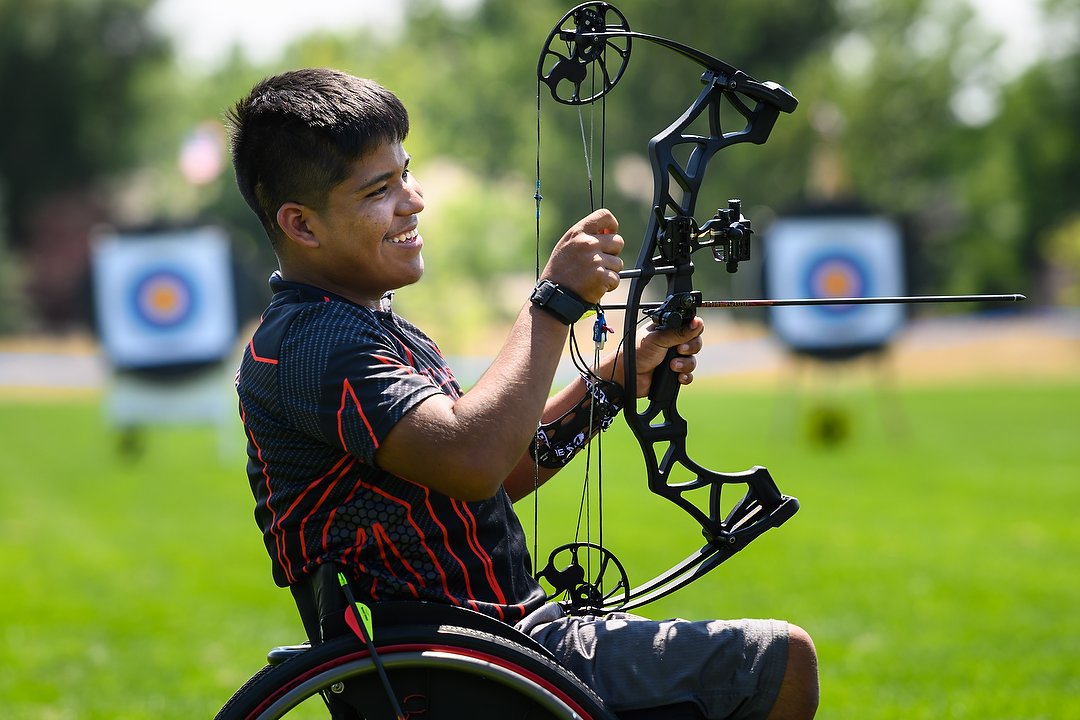
Any sports photographer will tell you that action is good, but reaction, or emotion, is even better. Nikon Z 50, Manual exposure, Natural auto white balance, ISO 200, 1/800 at f/4 in Matrix metering, -0.3 EV, Nikkor VR Zoom 70-200mm f/2.8G IF-ED lens at 180mm.
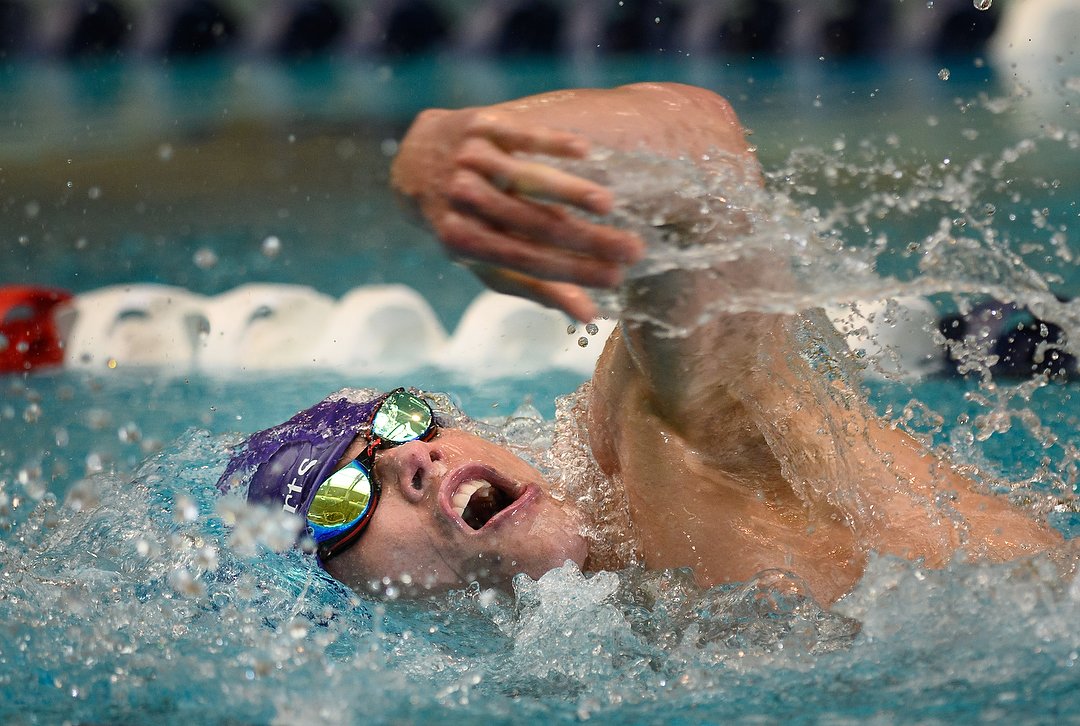
I brought along two strobes (Flashpoint eVolv 200) for swimming and a couple of other indoor events. I only used them for a few races, but wow, I love the added contrast that came from them. Nikon Z 6 II, Manual exposure, Natural auto white balance, ISO 1600, 1/1000 at f/4 in Matrix metering, Nikkor VR 300mm f/2.8G lens with Nikkor TC14e III teleconverter for 420mm.

When I found out the swim venue had a catwalk, I knew I wanted to get permission to go up there for a different angle. Nikon Z 50, Manual exposure, Natural auto white balance, ISO 1000, 1/1600 at f/2.8 in Matrix metering, Nikkor VR Zoom 70-200mm f/2.8G IF-ED lens at 200mm.

One swimmer gave a thumbs-up to her family after completing her race. Nikon Z 50, Manual exposure, Auto white balance, ISO 1250, 1/400 at f/4 in Matrix metering, Nikkor VR 300mm f/2.8G lens with Nikkor TC14e III teleconverter for 420mm.
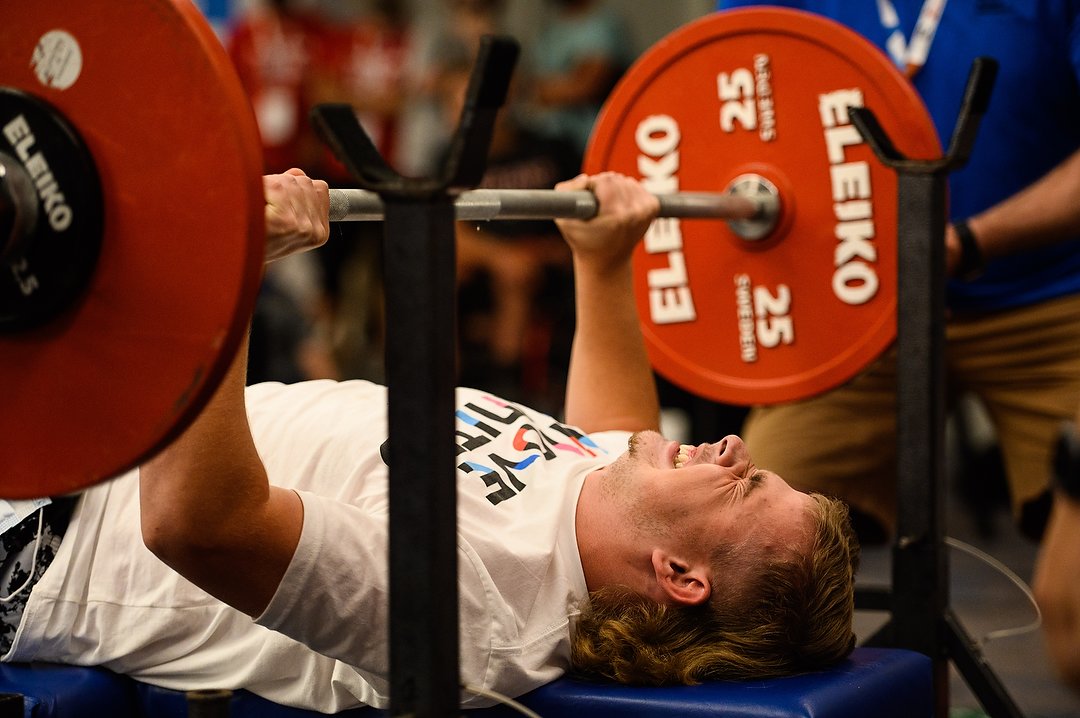
The weightlifting competition was one of the more challenging to shoot. Indoors in poor light, with judges and spotters around the athletes, there were only a few narrow angles available. Nikon Z 6 II, Manual exposure, Auto white balance, ISO 3200, 1/200 at f/2.8 in Matrix metering, Nikkor VR 70-200mm f/2.8G lens at 116mm.
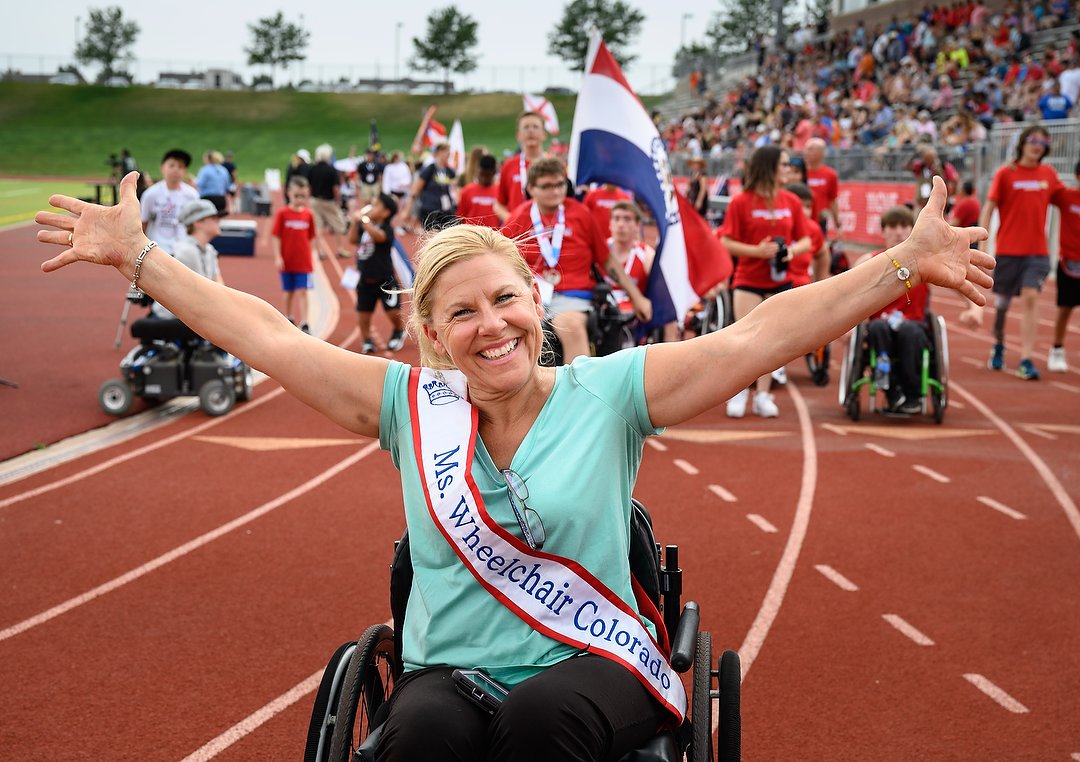
Opening ceremonies included a parade of athletes. Nikon Z 6 II, Aperture Priority, Natural auto white balance, ISO 400, 1/200 at f/4.5 in Matrix metering, +0.3 EV, Nikkor Z 24-70mm f/2.8 S lens at 44mm.
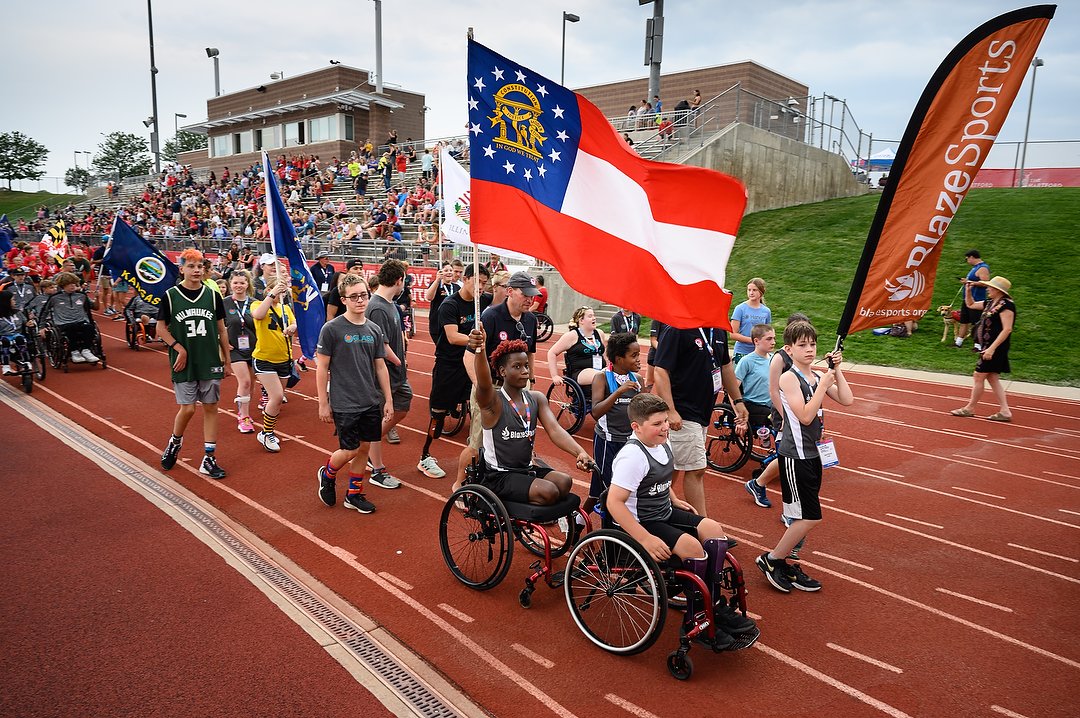
With nearly 300 athletes competing, many states across the U.S. were represented. Nikon Z 6 II, Aperture Priority, Natural auto white balance, ISO 400, 1/160 at f/5.6 in Matrix metering, +0.3 EV, Nikkor Z 24-70mm f/2.8 S lens at 24mm.
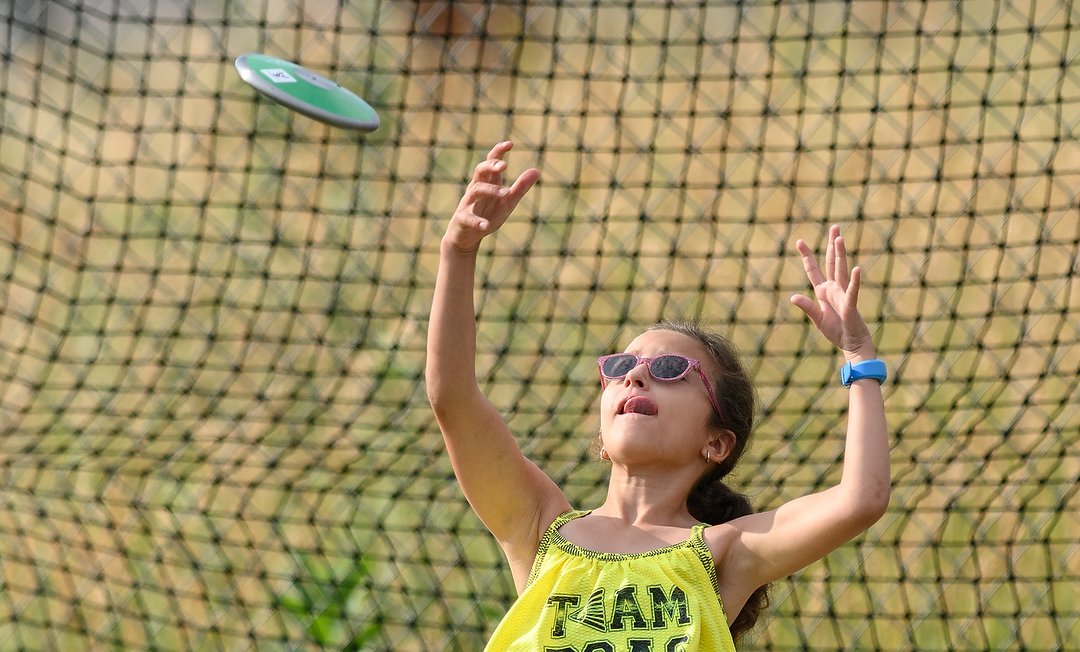
Telephoto lenses and wide apertures helped keep backgrounds out of focus, but I still worked to find “clean” backgrounds, with few distractions. This hillside of grasses behind the discus area was one of my favorites. Nikon Z 50, Aperture Priority, Sunny white balance, ISO 400, 1/4000 at f/4 in Matrix metering, 0.0 EV, Nikkor VR 300mm f/2.8G IF-ED lens.
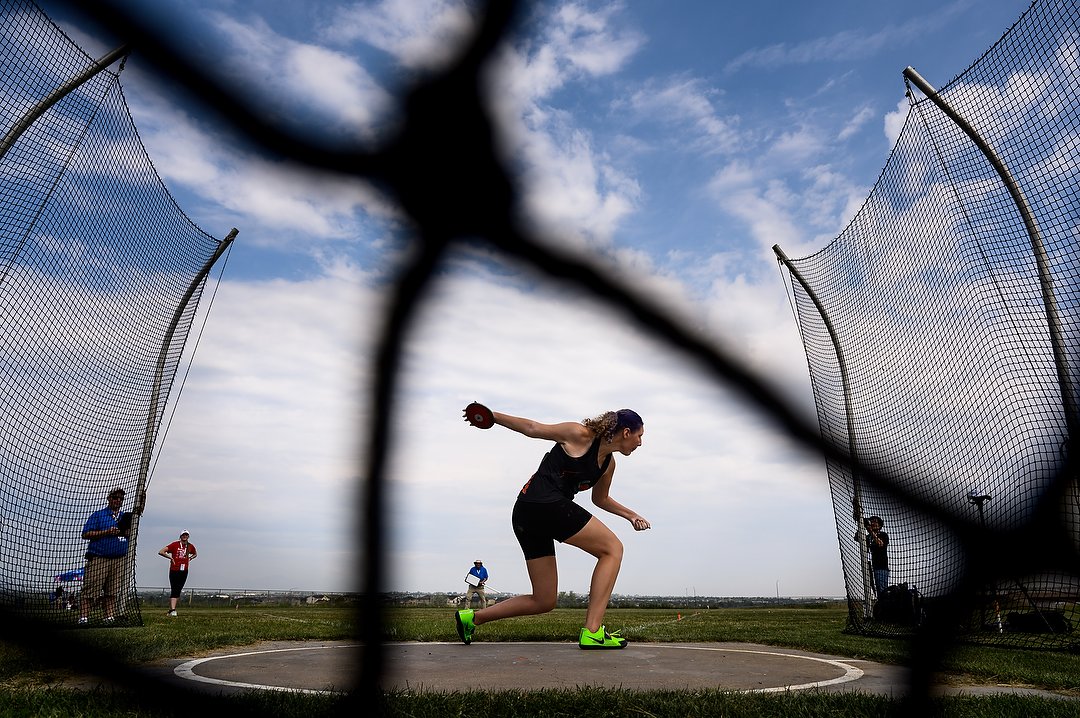
We had some nice skies the first morning of field events, so I used that along with the protective netting to create this photo. Nikon Z 6 II, Aperture Priority, Natural auto white balance, ISO 320, 1/1600 at f/7.1 in Matrix metering, +0.3 EV, Nikkor Z 24-70mm f/2.8 S lens at 24mm.
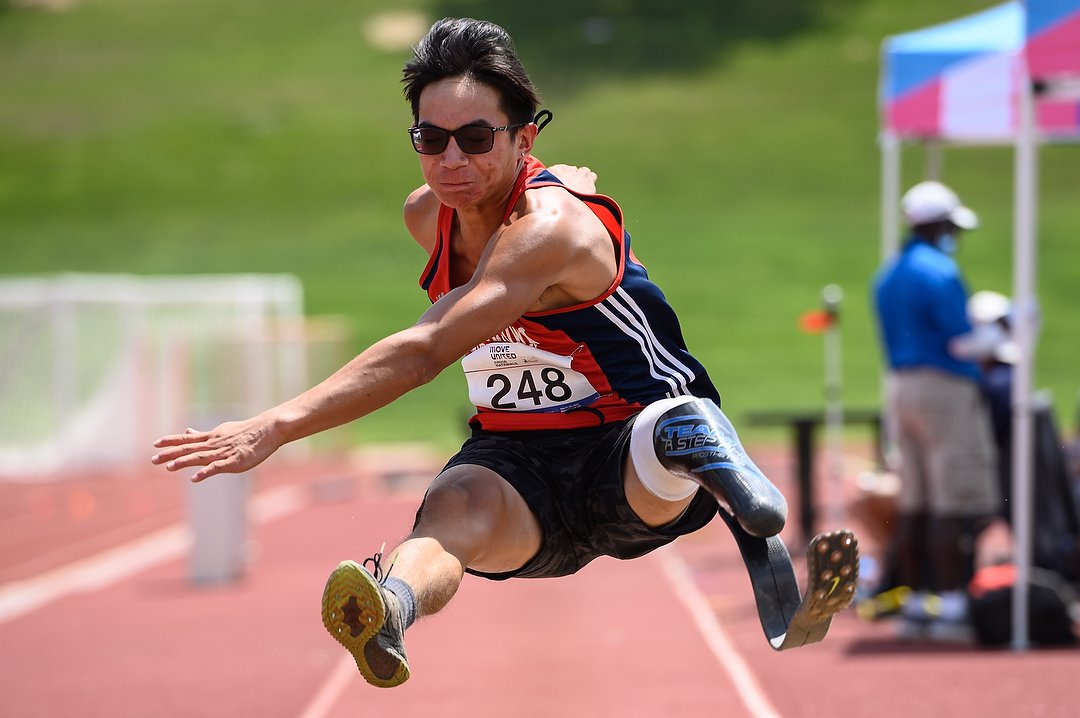
For action coming at me, fast, I relied on the Z 6 II’s advanced autofocus system. And again, using a wide aperture with a telephoto lens helped make an ugly background less so. Nikon Z 6 II, Manual exposure, Sunny white balance, ISO 200, 1/1600 at f/4 in Matrix metering, 0.0 EV, Nikkor VR 70-200mm f/2.8G lens at 200mm. Photo copyright Reed Hoffmann.
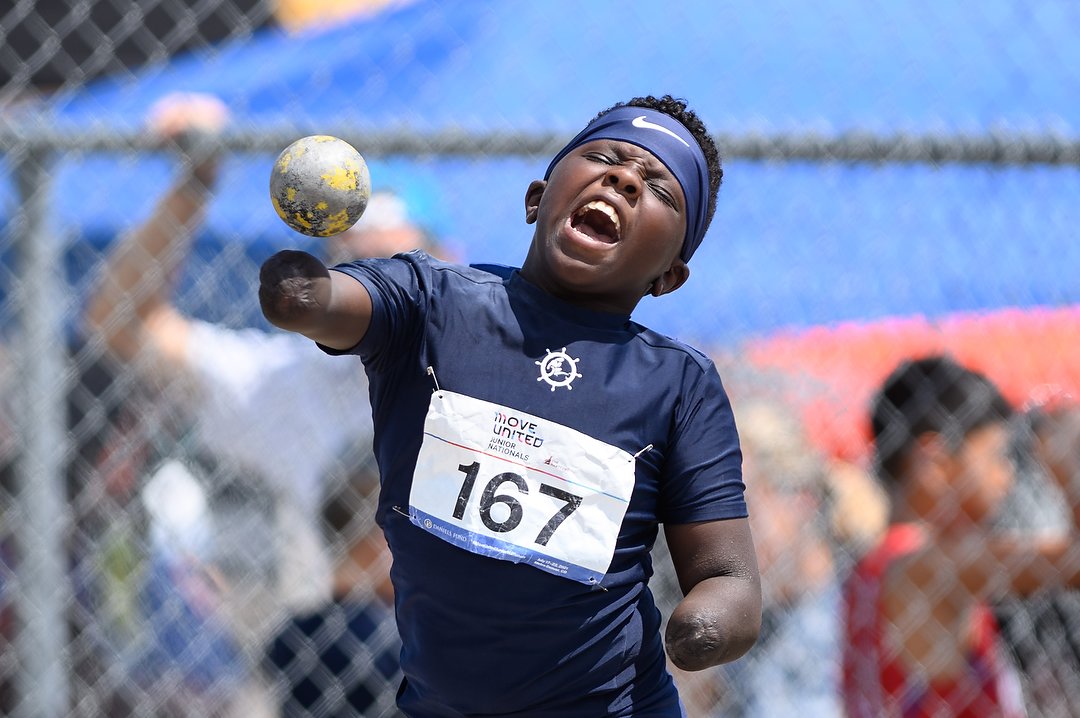
It’s truly amazing what some of these athletes can do despite their limitations, like this young man at shot put. Nikon Z 6 II, Manual exposure, Sunny white balance, ISO 200, 1/1250 at f/4 in Matrix metering, 0.0 EV, Nikkor VR 300mm f/2.8G lens with Nikkor TC14e III teleconverter for 420mm.
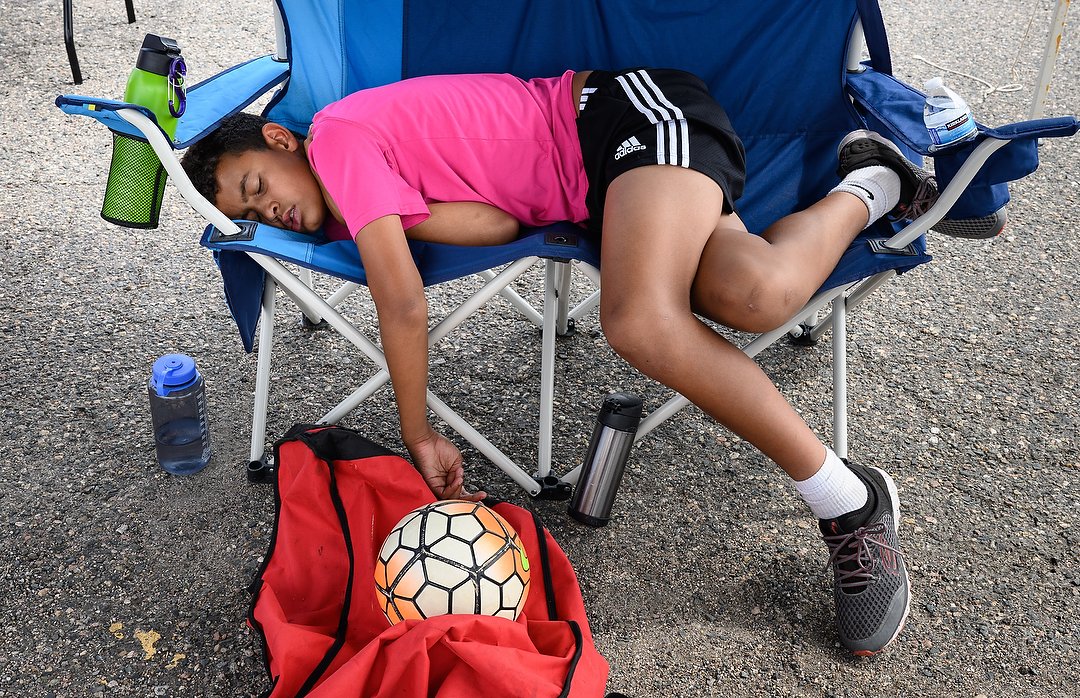
Temperatures in the 90s all week and events running day after day resulted in a lot of exhausted people. Nikon Z 50, Aperture Priority, Sunny white balance, ISO 200, 1/250 at f/5 in multi-segment metering, +0.7 EV, Nikkor Z 24-70mm f/2.8 S lens at 24mm. Photo copyright Reed Hoffmann.

The long distance track events gave me the time and opportunity to look for different angles and types of photos. Nikon Z 50, Aperture Priority, Sunny white balance, ISO 320, 1/1000 at f/5 in Matrix metering, 0.0 EV, Nikkor VR Zoom 70-200mm f/2.8G IF-ED lens at 112mm.
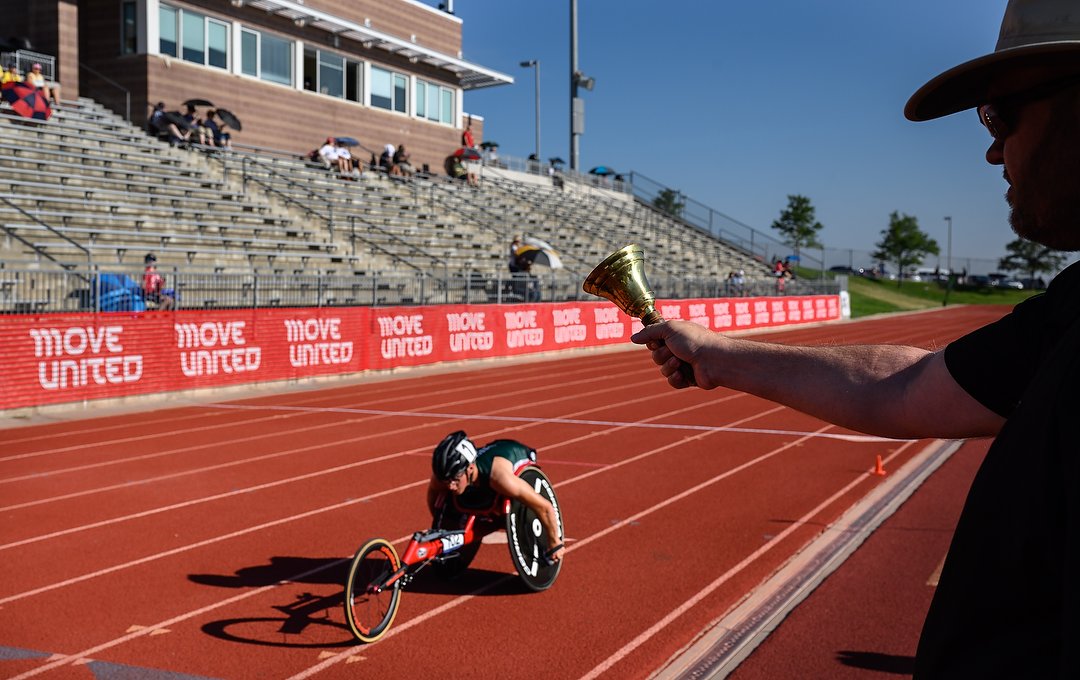
A judge rings the bell indicating the last lap for one of the races. Nikon Z 6 II, Manual exposure, Sunny white balance, ISO 250, 1/1600 at f/7.1 in Matrix metering, 0.0 EV, Nikkor Z 24-70mm f/2.8 S lens at 40mm.

There were some whose races ended earlier than they’d like, but that was just part of the competition. Nikon Z 6 II, Manual exposure, Sunny white balance, ISO 200, 1/2000 at f/4.5 in Matrix metering, 0.0 EV, Nikkor VR 300mm f/2.8G lens with Nikkor TC14e III teleconverter for 420mm.
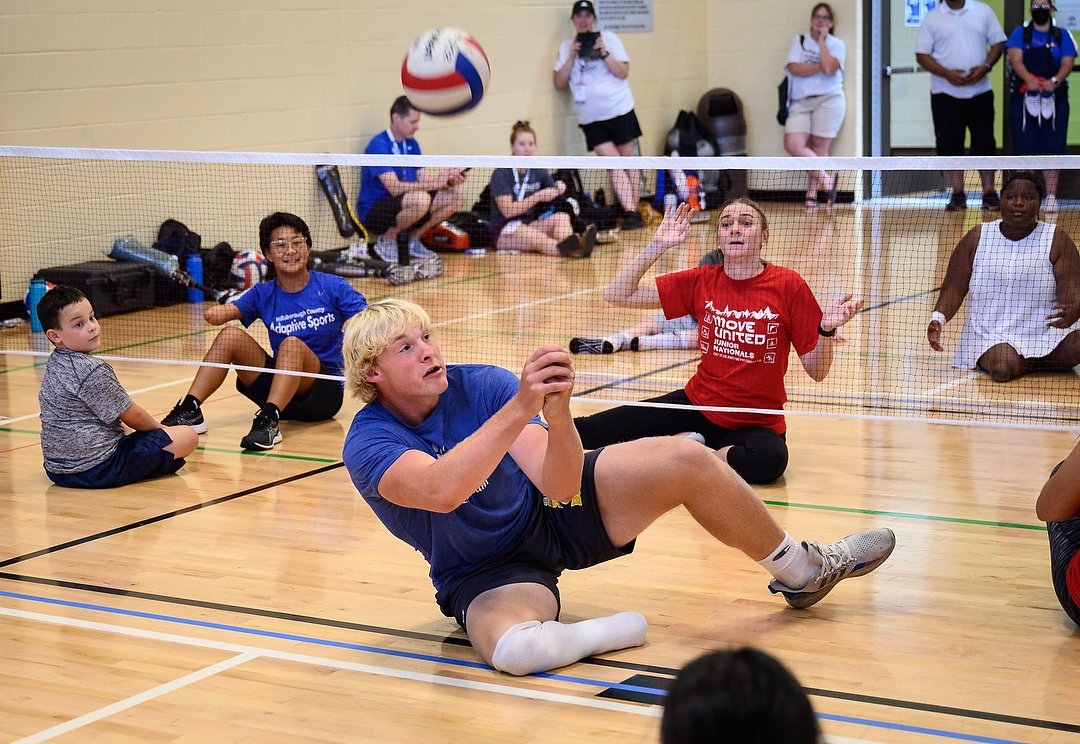
There were also clinics offered during the week, like this one on volleyball, for those who’d like to try out a new sport. Nikon Z 6 II, Manual exposure, Auto white balance, ISO 2000, 1/500 at f/2.8 in Matrix metering, +0.3 EV, Nikkor Z 24-70mm f/2.8 S lens at 48mm.
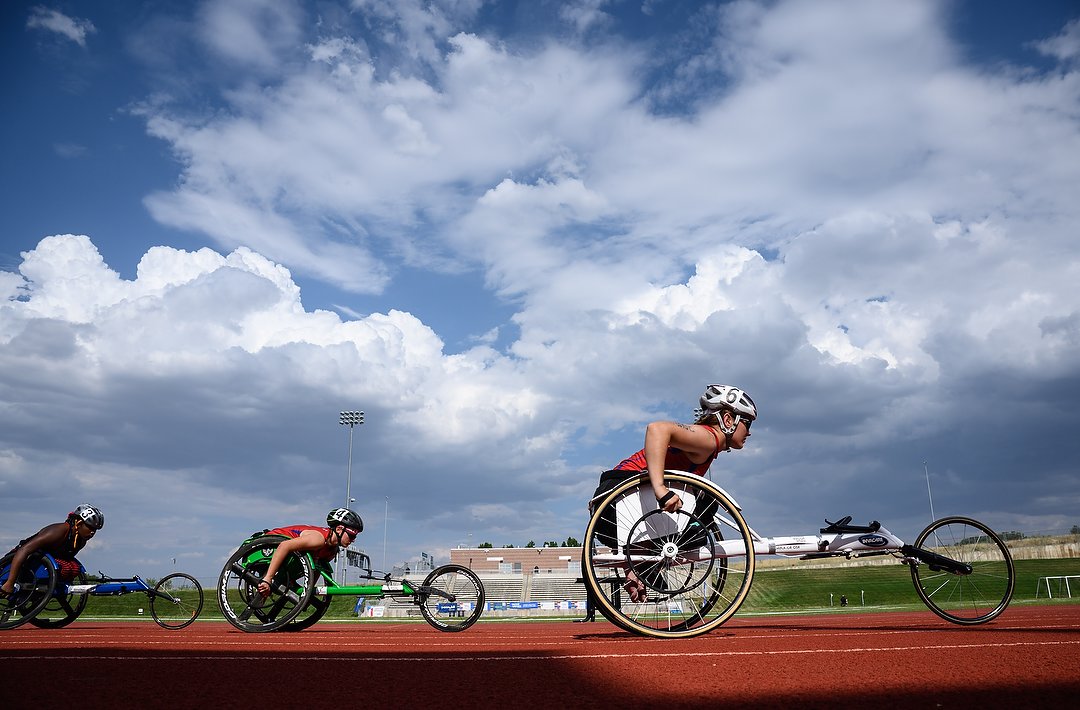
Great skies one afternoon at track meant another low-angle photo for me. Unfortunately, those great skies turned into thunderstorms, which pushed some of the races to the next day. Nikon Z 6 II, Aperture Priority, Sunny white balance, ISO 320, 1/1250 at f/9 in Matrix metering, +0.7 EV, Nikkor Z 24-70mm f/2.8 S lens at 24mm.
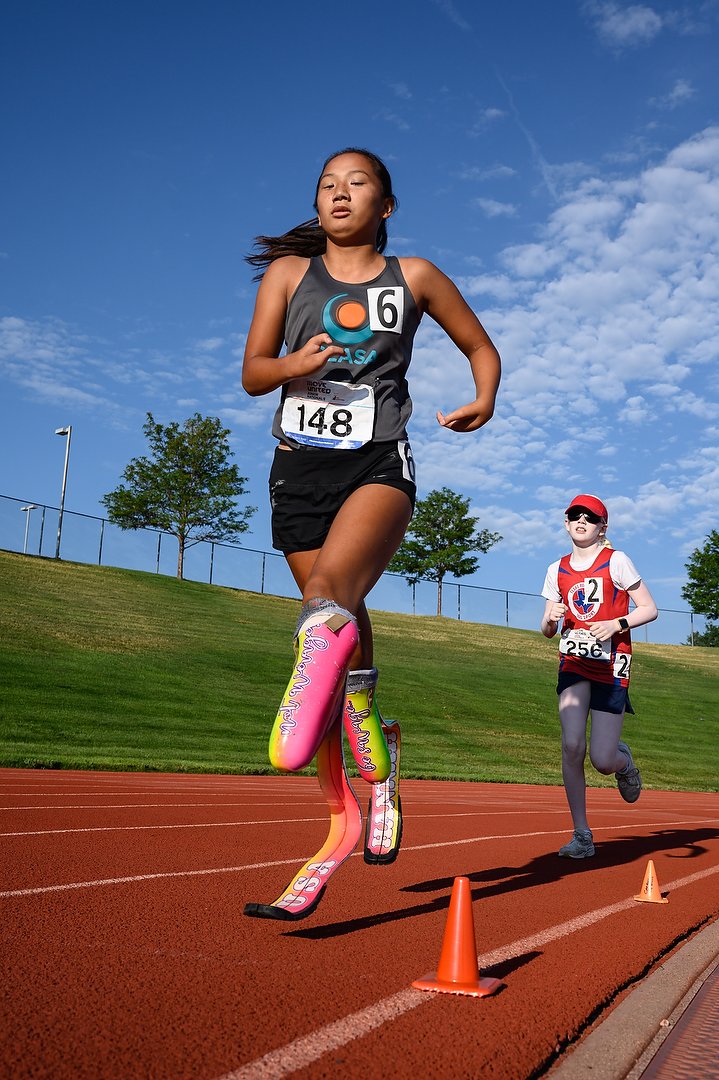
Early light and more clouds let me do another low-angle shoot at track’s edge for a few of the first races that day. The photos I give Move United can be used for everything from banners to magazine covers to their website, so I try to shoot a wide variety of both horizontal and vertical pictures. Nikon Z 6 II, Aperture Priority, Sunny white balance, ISO 320, 1/1600 at f/8 in Matrix metering, -0.7 EV, Nikkor Z 24-70mm f/2.8 S lens at 34.5mm. Photo copyright Reed Hoffmann.
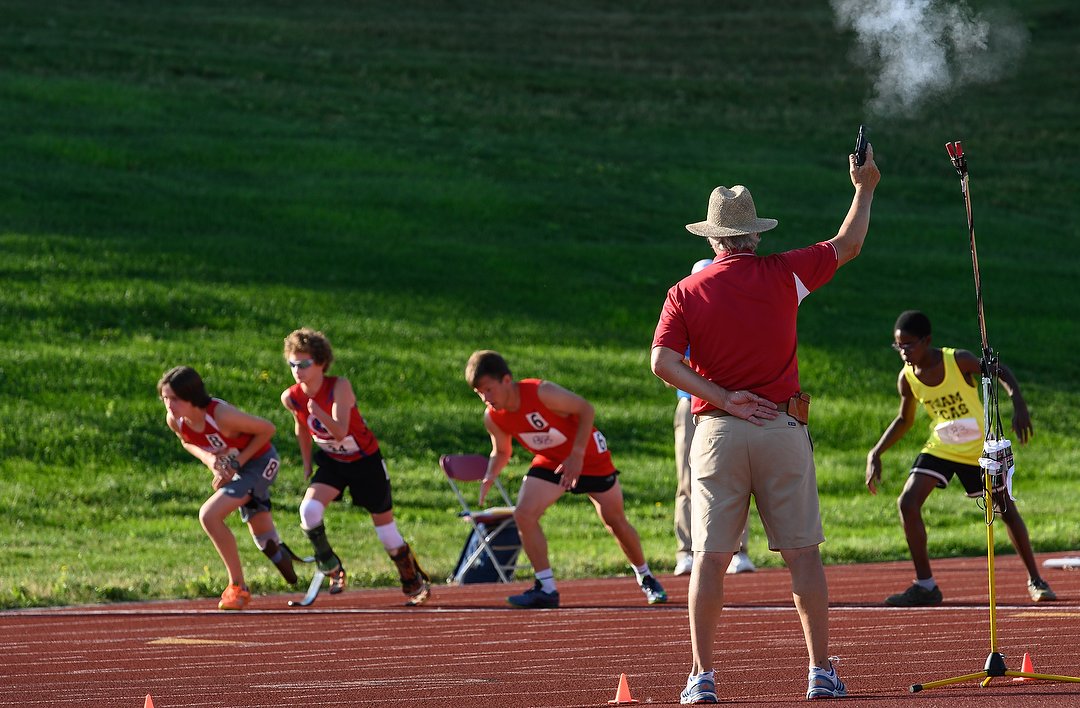
I took advantage of the shadowed hillside behind the racers to make the smoke from the starter’s pistol more visible. Nikon Z 50, Manual exposure, Sunny white balance, ISO 250, 1/1000 at f/4.5 in Matrix metering, -0.7 EV, Nikkor VR Zoom 70-200mm f/2.8G IF-ED lens at 185mm.
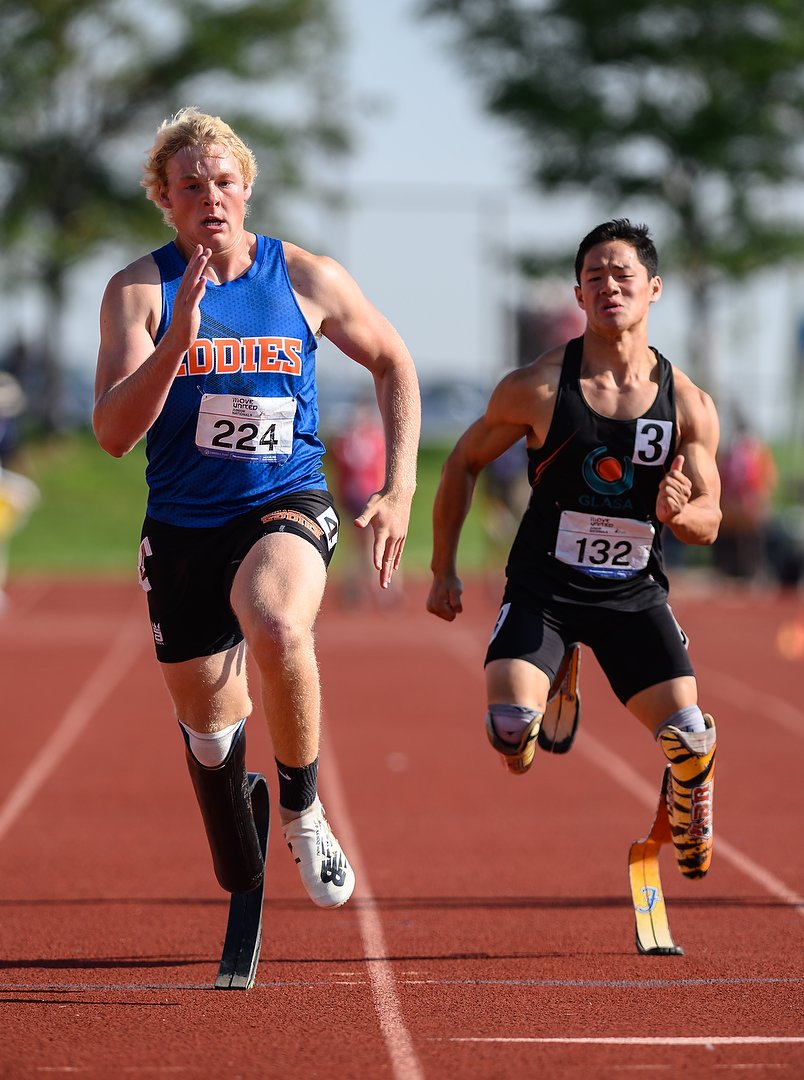
The 100-meter sprints always make for great action and expressions. Nikon Z 6 II, Manual exposure, Sunny white balance, ISO 125, 1/1250 at f/5 in Matrix metering, -1.0 EV, Nikkor VR 300mm f/2.8G lens with Nikkor TC14e III teleconverter for 420mm.

After that race, I found one of the athletes fighting the heat by dunking his head in a cooler full of ice. While most of my action photography is done with telephoto lenses, this is why I always have a second camera with a wide-angle lens on my shoulder. Nikon Z 50, Aperture Priority, Sunny white balance, ISO 400, 1/1600 at f/6.3 in Matrix metering, 0.0 EV, Nikkor Z 24-70mm f/2.8 S lens at 30mm.
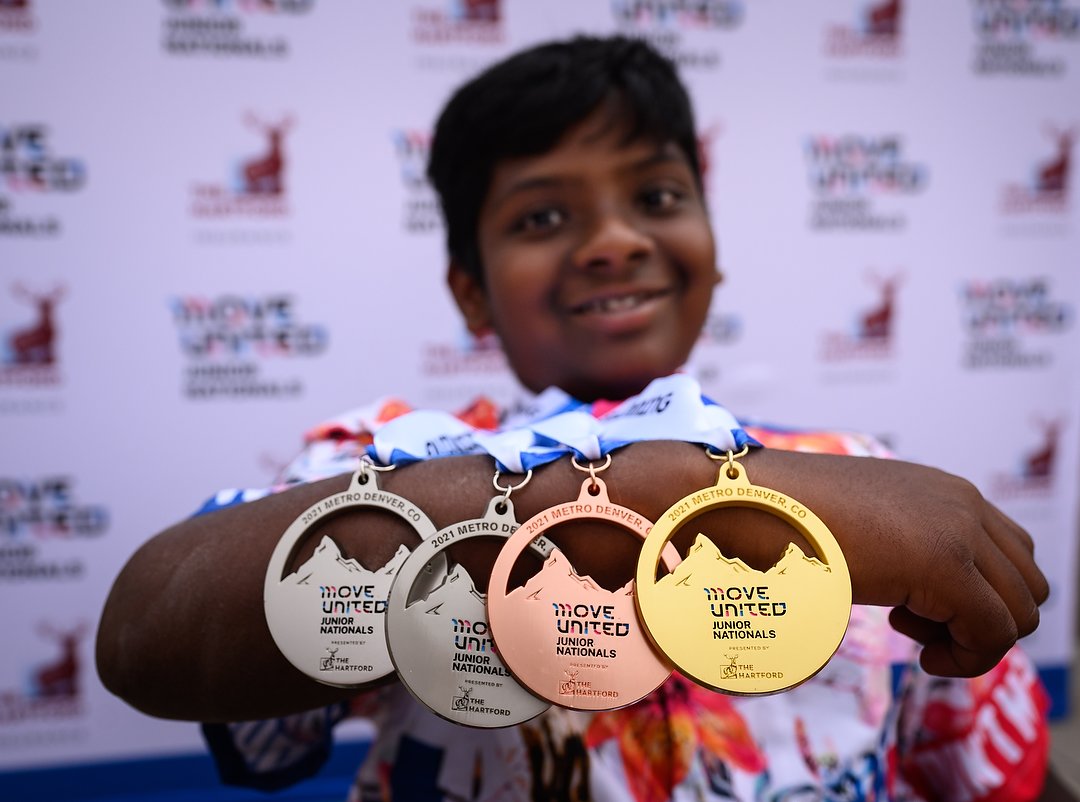
Competing in multiple events over the week-long event offers the opportunity for multiple medals. Nikon Z 6 II, Aperture Priority, Natural auto white balance, ISO 500, 1/250 at f/4 in Matrix metering, +0.3 EV, Nikkor Z 24-70mm f/2.8 S lens at 28mm.
(If you like this story, please share it with your friends and let them know about the links on photography that I post on my business Facebook page. I’m also on Instagram and Twitter, @reedhoffmann. And if you’re curious about the workshops I teach, you can find them here. And, you can subscribe to this blog on my home page.)

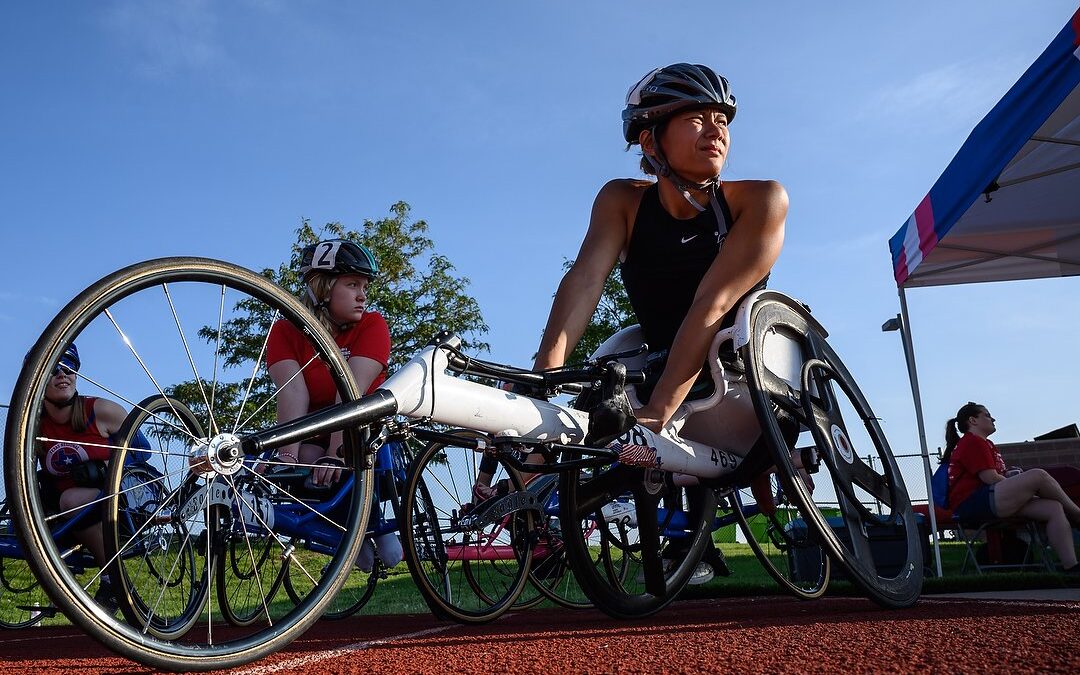
Phenomenal images Reed! What an inspirational group of athletes. It is terrific that you do so much for this cause!
Outstanding images Reed! And super that you lend you time & talent to such organizations.